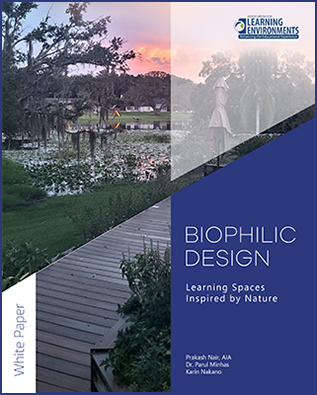Biophilic Design: Learning Spaces Inspired by Nature
A4LE White Papers

White Paper for the Association for Learning Environments
by Prakash Nair, AIA,
Dr. Parul Minhas,
Karin Nakano
Publication Date: November 21, 2022
View White Paper
The rapidly developing and urbanizing world has distanced many people from nature and natural processes that used to be a central part of human activity. In fact, by 2050, it is said that 66% of the world will be urbanized, further dissociating humans from nature. While this scenario is distressing for all people, it is particularly harmful to children in their developmental years.
Biophilic Design invites urbanized spaces to include natural elements and processes to improve people’s well-being inside buildings and spaces. It is an approach to design that aims to connect humans and nature in our living, learning, and working places. As the world becomes increasingly urbanized, not only adults but more children will lose their connection to nature as they grow up. It is important to recognize how meaningful and beneficial it is for schools to incorporate biophilic designs to ensure that children, no matter their backgrounds or identity, are exposed to such designs and can improve their well-being while at school.